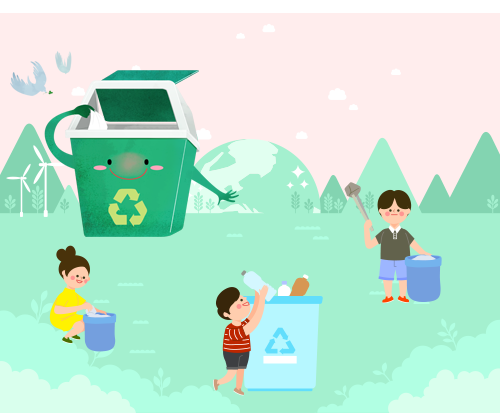Audiovisuals
Explore storytelling contents made with video and photographic materials.
Audiovisuals
A Stepping Stone for Mature Civic Awareness, a Nature Conservation Movement
The 1970s Nature Conservation that Became a Precursor of the Environmental Movement
Exploration of Ulleungdo and Dokdo, the Message of Nature to Humanity
In October 1981, the Ulleungdo and Dokdo academic research teams set out to explore the Ulleungdo and Dokdo ecosystems. The research team, divided into 10 sub-teams, discovered a variety of species that had never been seen before by exploring seabed topography and studying terrestrial plants and animals, and sea creatures.
The Dokdo exploration revealed some astonishing facts. Five species of rabbits that were introduced to Dokdo eight years ago have made extinct 30 species of plants. This was a warning that the natural balance might collapse if land animals were brought to Dokdo without caution.
The Dokdo exploration revealed some astonishing facts. Five species of rabbits that were introduced to Dokdo eight years ago have made extinct 30 species of plants. This was a warning that the natural balance might collapse if land animals were brought to Dokdo without caution.


Academic Research Team Exploring Ulleungdo and Dokdo
A Nation-Wide Saemaul Undong that Practices Nature Conservation in Everyday Life
The exploration of Ulleungdo and Dokdo ecosystems was part of the nature conservation movement that began in the late 1970s. It is a mistake to consider it a small private activity because of the nuance of the name “nature protection”. The nature protection movement was a national movement and a Saemaul Undong that began in 1977 with the establishment of the "Nature Conservancy Association" (now the Korean Nature Council for Conservation of Nature which is a coalition of 74,000 organizations with 13 million members). A nation-wide mass rally on November 5th, held at Jangchung Gymnasium was the signal of the nature conservation movement.


Proclamation of the Nature Conservation Charter(Saemaul Illustration Books, 1978)
In October of the following year, the government proclaimed the "Nature Conservation Charter" in order to actively support nature conservation activities.
Humans are born in nature, live by the benefits of nature, and return to nature. The sky, the earth, the sea, and all the things in them are the resources for our life.

“Don’t throw rubbish away before picking it up, dumping it in the wastebasket”
During the rapid industrialization of the 1970s, the country suffered from pollution. In order to protect the natural environment, the government introduced a myriad of systems, such as eradicating illegal buildings in the forest, having one nursing tree in one village, designating the flowers, trees and birds for each local government, setting up mountain trails, designating amenities, setting up a nature study center and a body and spirit training center in nature, and protecting rare animals and plants.



Promotional cartoon to encourage participation in nature conservation activities
The people actively participated in the national loving campaign at the workplace, school, and village under the slogan "Human protects nature, nature protects human". The beginning was 'picking up garbage'. The next step was to not throw out the garbage, then it was continued as reclaim the garbage.


This was the process of internalizing the advanced environmental consciousness rather than merely picking up or not disposing of garbage. As a result, the number of voluntary actions for nature increased, such as nurturing endangered plants and transplanting into their native habitat, collecting empty bottles while climbing and helping their neighbors in need with the bottles, purifying the polluted migratory birds’ habitat in Nakdong River, getting rid of the waste under the sea, rushing to prevent forest fires. This effort to protect nature has given us public awareness and civic consciousness.
The Root of Environmental Movement
The achievement of the Korean Nature Council for Conservation of Nature, which has been leading nature conservation activities since the 1970s, is not negligible. The introduction of the 'break period for nature' is one of them. In order to preserve a natural ecosystem, the entrance and exit of people are controlled for three years by designating mountains and rivers likely to be damaged. This policy is greatly helping nature to recover its resiliency.












